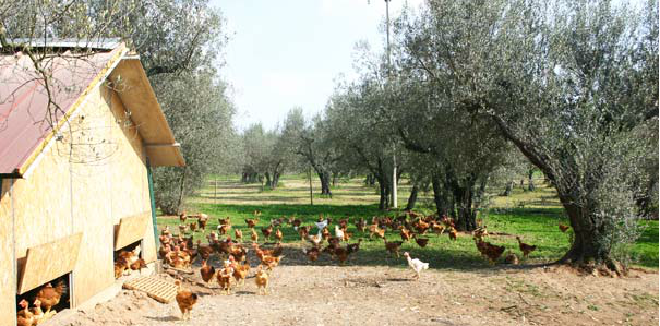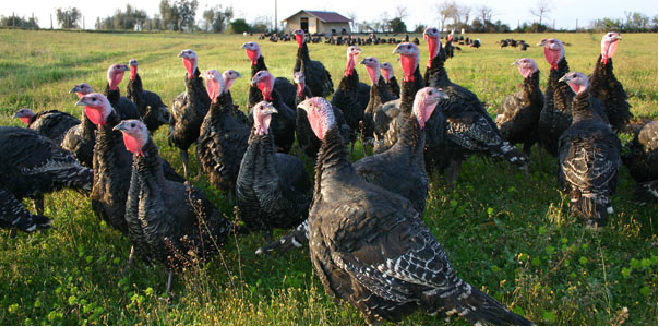The farm is certified as organic, using much more pasture land than the minimum requested by the organic certification. Naked-neck chickens are used for meat, but also turkeys and hens for eggs are reared at the pastures. There is a farm shop where the meat and eggs are sold, but most of the product goes all over Italy.
With growing numbers, the offal and left-overs from the processing, became expensive to get rid of, so Mr. Marsan decided to turn them into an opportunity: he invested in a biogas plant, which ferments the offal, mixed with olive cake from the olive oil pressing facility and other farm materials. The methane produced is then used to generate electric power, sold to the grid. The exhausted material (liquid compost) becomes a perfect fertilizer for the olive trees and goes back to the field. The short distance between the biogas plant and the fields makes it convenient to transport the liquid material without the need to dry it up, saving time and money. The farm is expanding, covering about 130 ha at the moment.















